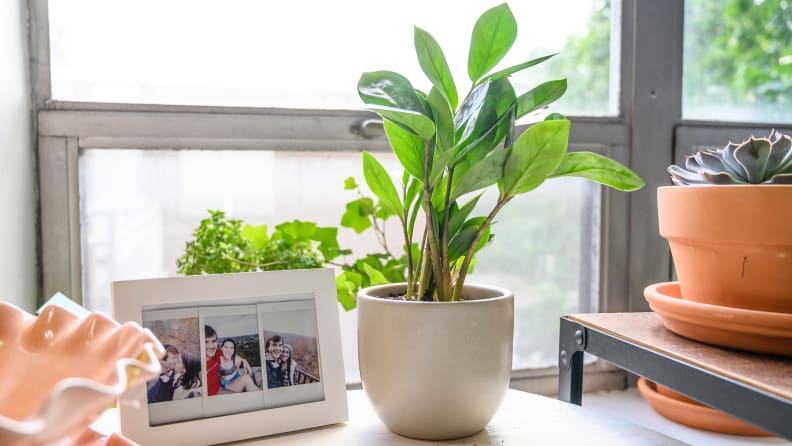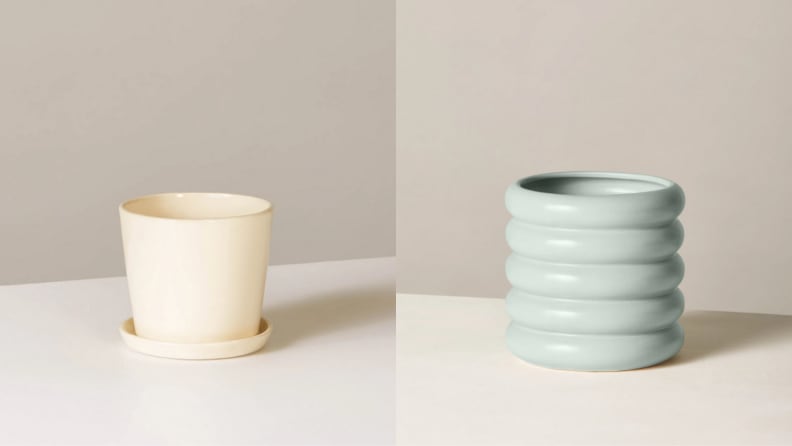How to brighten up your home with plants
You don’t need a green thumb to have greenery
Products are chosen independently by our editors. Purchases made through our links may earn us a commission.
Whether you’re just moving into a new home or comfortably settled, adding plants to your space has many benefits. Plants help to clean the air, add color to the room, take up space on sparse shelves, and give you something to care for.
My “plant family” started when I was in the woes of seasonal depression and dealing with the stress of my senior year of undergrad. Having something that was both alive and dependent on me has grown into one of my favorite hobbies. If you’re looking to add some life and love to your home, this guide is for you!
Before you fill your cart with the cutest plants you can find, take a moment to critically assess your home and what kind of plants are best suited for your space. Ask yourself these four questions to help guide which plants will work best for your home.
What kind of light are you working with?

How is the natural light in your home?
The first step is to take note of your space, specifically looking at your windows and lighting. Does your kitchen get great light in the morning? Is it direct? Are there a few shady corners in the living room? What direction do your upstairs windows face?
Since plants need sunlight—and varying degrees and intensities of it—it’s important to know what you’re working with before you bring plants home. If your home gets light in the morning, you have east-facing windows; light in the afternoon/evening comes through west-facing windows.
If you have steady, direct light all day (and live in the Northern hemisphere) you have south-facing windows, which are GREAT, you lucky dog! These are optimal for succulents and plants that like to soak up the sun. Lastly, if you get indirect light and it’s a little gray, you have north-facing windows. These aren’t the best, but they’re good for super low-light plants and for giving recovering plants a break.
Once you know the amount of light you get, consider how much. Direct sunlight is bright and intense, which some plants need. Many houseplants prefer indirect light, which can be achieved with a light curtain or by placing them just out of reach of direct rays.
But, a lack of direct sunlight doesn’t mean you can’t have plants! There are numerous options for low-light rooms like bathrooms and shady bedrooms. The humidity of bathrooms is actually valuable for some plant variations, especially in the winter months!
Which plants should you buy?
Before you buy plants, you need to consider more than just the lighting. Picture the space you want to add plants to—do you have floor space? Can you hang plants from the ceiling? Do you want plants that need to be watered often or ones that do well in dry soil?
Consider how involved you want to be—can you handle a plant that needs to be watered once a day? You also need to consider if you need pet-friendly options, as some plants are toxic too cats and dogs.
There are plants for all types of people, so think about what your needs are. These plants are ideal for all levels of involvement (and fun) depending on the light they grow best in. The “fun” category contains some plants that are more temperamental, have exciting and less traditional shapes, and tend to be more expensive. But in my experience, they’re satisfying to watch grow!
Low Light
- Easy: Snake plant (Dracaena trifasciata), Spider Plant (Chlorophytum comosum), Ponytail Palm (Beaucarnea recurvata)
- Medium/Hard: Lucky Bamboo (Dracaena sanderiana), ZZ plant (Zamioculcas)
- For Fun: Chinese Money plant (Pilea peperomioides), Burro’s tail (Sedum morganianum)
Indirect Light
- Easy: Pothos (Epipremnum aureum), Philodendron, Air Plants (Xerographica)
- Medium/Hard: Prayer plant (Maranta leuconeura), Parlor Palm (Chamaedorea elegans), Herbs (mint, cilantro, mint, etc)
- For Fun: Fiddle Leaf Fig (Ficus lyrata), Rubber Plant (Ficus elastica), Bird of Paradise (Strelitzia)
Direct Light
- Easy: Pencil Cactus (Euphorbia tirucalli), Hens and Chicks (Sempervivum group), Jade (Crassula ovata)
- Medium/Hard: Aloe Vera, Haworthia Zebra
- For Fun: Heart Plant (Hoya kerrii), Monstera (Monstera deliciosa)
What do you plant in?

Pick planters based on function (and, ok, yes, style).
Plants can add color and dimension to a room, and what they’re potted in can too! You can use practically anything to pot plants, especially since their root systems vary widely. You can go a classic route and use terracotta pots and saucers, which are both grounding and budget-friendly.
Smaller plants like succulents or plant clippings will fit in mugs, empty jars, or small ceramics. Everything is an option!
I typically prefer pots that already have a hole for drainage, but if yours doesn’t you can place a layer of pebbles or small rocks at the bottom before you add soil to prevent the water from collecting and causing root rot.
A lot of plants can be propagated in water—a piece of one plant can be cut off and then grow into another plant. I like to style those types in glassware like salad dressing bottles, vases, and random thrifted vessels. When doing this though, it’s important to make sure there is room for roots to grow below, and that the opening is small enough so the original plant won’t slip through. Bottles with small necks are best to start off with.
Repotting plants is my favorite activity. Seriously. I love matching the leaf color and structure with contrasting pot colors and shapes. It’s like finding a happy home for your plant friends. The styling is up to you, but there are a few things to keep in mind:
Make sure you’re using the right type of soil. Most indoor houseplants need a potting mix, but succulents (Aloe, cacti, Jade) need a more tropical mix with sand so the water will drain properly. In the warmer months, it’s best to fertilize.
Pot plants so their root systems are “hanging.” This means that if a plant has a large root system you want to plant it in a pot big enough for the roots to extend down comfortably. It may look odd at times since some plants have small leaves and extensive roots or the opposite, but that’s okay!
Regardless of how you plant, remember to rotate your plants, especially if they grow quickly. If you have plants in direct sun it’s important to turn them every few weeks too; otherwise, they may start to grow heavier to one side as they reach for the sun. I aim to “flip” my hanging plants on their hook once a month, and turn my pothos plants every week since they vine so quickly!
Where should you buy plants?

The Sill is one of our favorite places to buy plants online.
Now that you have an idea of what you want, go shop! There are tons of places to get plants. Home Depot and Lowe’s are fantastic for indoor plants, especially pothos, ponytail palms, and hanging ferns.
The Sill is an online market we love where you can mix and match plants and pots and have them delivered to your door. They have so many funky options, so I recommend checking them out (even if just for inspiration)!
Any local plant place or nursery near you is sure to have a unique selection, just make sure you read the labels and apply all your newly-acquired plant knowledge!
